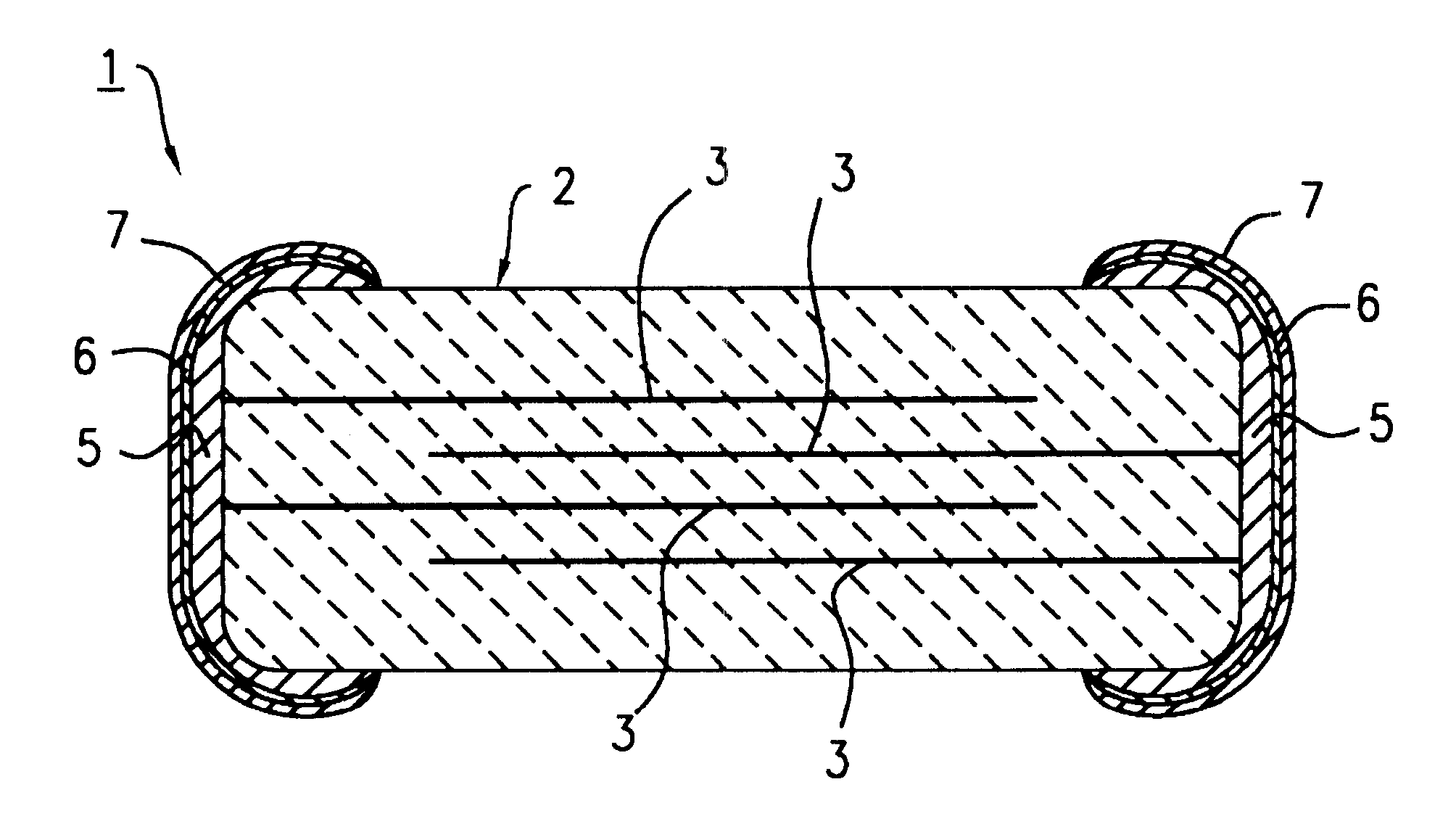Monolithic capacitor and process for producing the capacitor
a monolithic capacitor and capacitor technology, applied in the field of monolithic capacitor and process for producing the capacitor, can solve the problems of reducing the reliability of the monolithic capacitor, and difficulty in maintaining the reliability of the cazro.sub.3 --catio.sub.3
- Summary
- Abstract
- Description
- Claims
- Application Information
AI Technical Summary
Benefits of technology
Problems solved by technology
Method used
Image
Examples
Embodiment Construction
The present invention will next be described in more detail by way of the Example.
CaCO.sub.3 powder, ZrO.sub.2 powder and TiO.sub.2 powder, serving as raw materials constituting a primary component of a dielectric ceramic material, were wet-mixed by use of a ball mill so as to attain weight proportions of 43.6:35.9:15.5. The resultant mixture was pulverized to thereby obtain raw material powder. The raw material powder was calcined at 1,150.degree. C. for two hours, obtaining a calcined raw material. The calcined raw material was further wet-pulverized, and then, to the resultant powder, MnO powder and glass predominantly containing SiO.sub.2 --Li.sub.2 O were added. To the resultant mixture, an organic binder and a solvent were added, and then the mixture was kneaded to thereby obtain a ceramic slurry. A ceramic green sheet was formed from the ceramic slurry, and an Ni paste was applied onto the green sheet to effect printing of an internal electrode. A plurality of the ceramic gre...
PUM
| Property | Measurement | Unit |
|---|---|---|
| Angle | aaaaa | aaaaa |
| Temperature | aaaaa | aaaaa |
| Temperature | aaaaa | aaaaa |
Abstract
Description
Claims
Application Information
 Login to View More
Login to View More - R&D
- Intellectual Property
- Life Sciences
- Materials
- Tech Scout
- Unparalleled Data Quality
- Higher Quality Content
- 60% Fewer Hallucinations
Browse by: Latest US Patents, China's latest patents, Technical Efficacy Thesaurus, Application Domain, Technology Topic, Popular Technical Reports.
© 2025 PatSnap. All rights reserved.Legal|Privacy policy|Modern Slavery Act Transparency Statement|Sitemap|About US| Contact US: help@patsnap.com


